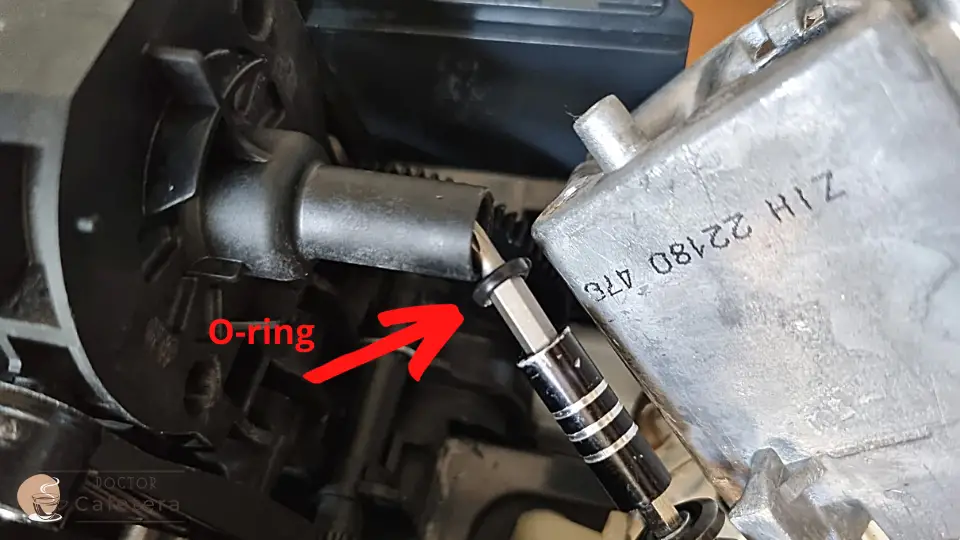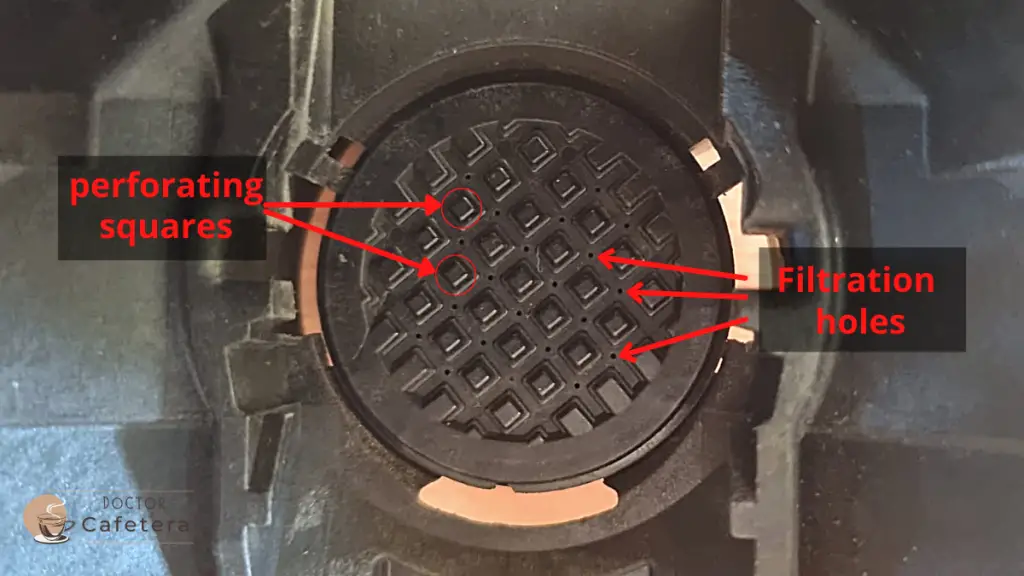Nespresso coffee machines are renowned leaders in the coffee pod maker market, a distinction they’ve earned not only because of the exceptional variety and quality of their coffees but also due to the reliability of their machines, which are noted for their few malfunctions. However, a particular design aspect could impact their performance.
Unlike competitors such as Dolce Gusto or Tassimo, Nespresso’s machines are designed to be more compact and intricate. A key component in these machines is the use of numerous O-rings. They are crucial in preventing water leakage but can be vulnerable in any coffee machine. This guide will explore how this design choice impacts the functionality and maintenance of Nespresso coffee makers.
Water leakage through the Nespresso brew unit
Unlike other brands with simpler systems, Nespresso machines stand out for their innovative design. The brew unit, located internally, performs a double puncture of the coffee pod, significantly improving coffee extraction and flavor.
The Nespresso brew unit plays an important role in its operation. This mechanism holds the coffee pod in a compartment, where three blades pierce it from the back, and a perforating disc acts on the front. Several issues can arise during this process that may result in water leakage.
Damaged internal O-ring inside the head
Inside the head, the component that punctures the coffee pod from the back has an internal O-ring that can deteriorate or break over time. If this happens, the Nespresso machine will start to drip above the compartment that collects used coffee pods. In the image below, you can see the location of this O-ring:
Damaged O-ring connecting the thermoblock to the head
The connection of the coffee machine brew unit to the thermoblock is secured by two screws. However, there is a small O-ring at the internal junction. If this O-ring becomes damaged, it can lead to water leaks. These leaks are typically noticeable in the coffee pod collection container and the machine’s base.
Note: The design may vary across different Nespresso models, but they all share the same O-ring connection system.
To check the good condition of this seal, you must disassemble the coffee machine and look at the junction between the thermoblock and the head, as shown in the image above.
Obstructed perforation disk
The last component in contact with the pod is the coffee pod’s perforation disk; when the filtration holes become blocked, water can come out where it shouldn’t. If this happens, we will observe a drop in Nespresso pressure alongside the dripping.
As I have explained in other articles, you can use an old toothbrush and rub it with clean water through the hole where you insert the coffee pod. In this case, there is no need to disassemble anything to resolve the issue.
Water leaks due to lack of maintenance and cleaning
Building on the previous section, we already saw that the lack of cleaning of the perforation disk could lead to pressure drops and dripping. However, many more parts of our Nespresso can cause water leaks due to insufficient maintenance.
The Nespresso coffee outlet nozzle is one of the easiest parts to disassemble and clean. Since all the coffee we brew passes through here, it’s one of the parts accumulating the most residue.
NOTE: Sometimes, the nozzle may crack or break, fitting improperly. This results in water leaks at the front of the Nespresso, so ensure the nozzle is thoroughly in good condition.
Of course, “invisible” dirt can also cause water leaks inside the coffee machine. When we talk about invisible dirt, we refer to the buildup of limescale in the pump and the thermoblock.
Therefore, if your Nespresso machine experiences water leaks, conducting one or more descaling processes can quickly resolve the issue.
Water leaks due to broken parts
If you want to address dripping issues in your Nespresso, disassembling it can be an excellent solution. This process will allow you to inspect all its internal components visually. Although uncommon, the thermoblock can sometimes have a crack, a problem that generally can only be identified through a visual inspection.
I’ve also seen cases where the plastic piece of the water pump outlet breaks, causing water leaks inside the coffee machine.
How to locate a water leak in a Nespresso:
To solve a water drip in a Nespresso, you should proceed analytically, meaning follow a series of steps to locate the leak and be able to repair it:
- Download the manual for your Nespresso
- Read the manual thoroughly
- Brew a coffee and locate the general area of the water leak (nozzle, head, base, or back)
- Perform a general cleaning and descaling
- Check if the water leak has been resolved
- If the issue persists, disassemble the coffee maker and perform a visual inspection
- Brew coffee without the casing and attempt to locate the source of the water leak
- Once you’ve located the leak, replace damaged O-rings or complete parts
- Brew coffee and observe if the problem has been resolved.
Frequently asked questions about water leaks in Nespresso coffee machines
Why does my Nespresso machine leak water from the bottom?
This could be due to a faulty water reservoir, internal piping problems, a damaged pump or heating element, or issues related to O-rings, which are plentiful in Nespresso coffee machines.
What should I do if water or coffee leaks from the capsule holder?
This could be due to defective coffee pods, a nozzle blockage, or a piercing disk blockage. Try using the original Nespresso pods to see if the problem persists. You should also perform a thorough cleaning of the nozzle and piercing disk.
How often should I descale my Nespresso machine to prevent leaks?
The frequency of descaling depends on the water’s hardness and the machine’s usage. Generally, it is recommended every 300 cups with hard water, 500-600 cups with normal hardness water, and up to 1200 cups with filtered water.
Can the use of third-party capsules cause leaks in my Nespresso machine?
Yes, using third-party capsules that may have a different size than the originals can cause leaks, especially in the brewing unit. It is always recommended to use Original capsules.




